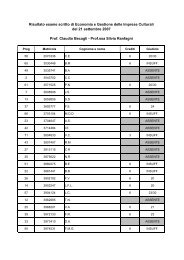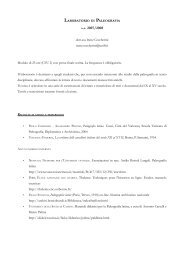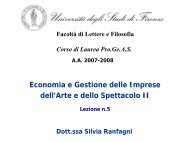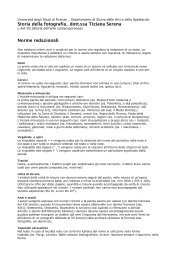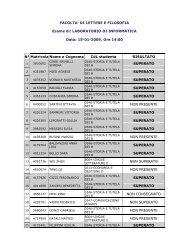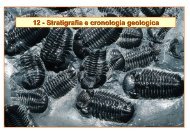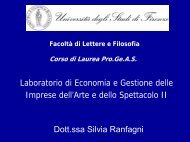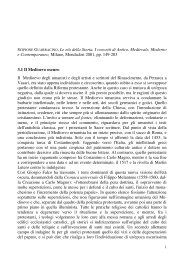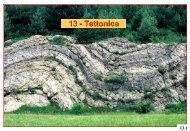Beyond Pragmatics. Morphosyntactic Development in Autism.pdf
Beyond Pragmatics. Morphosyntactic Development in Autism.pdf
Beyond Pragmatics. Morphosyntactic Development in Autism.pdf
Create successful ePaper yourself
Turn your PDF publications into a flip-book with our unique Google optimized e-Paper software.
J <strong>Autism</strong> Dev Disord<br />
to lead to lower scores for the DD group. When<br />
analyses were repeated with SES entered as a covariate,<br />
results were identical. The present results are<br />
based on analyses without covary<strong>in</strong>g SES or ethnicity.<br />
Procedure<br />
Children participated <strong>in</strong> a 30-m<strong>in</strong>ute free play session,<br />
which took place dur<strong>in</strong>g a second visit to the lab<br />
(standardized and diagnostic test<strong>in</strong>g took place dur<strong>in</strong>g<br />
the first session). The test<strong>in</strong>g room conta<strong>in</strong>ed a standard<br />
set of toys and books, and the children and a<br />
researcher played together with those toys. The caregiver<br />
was outside the room for all free play sessions<br />
(with the exception of one child from the TD group<br />
who was unable to separate from his mother). The free<br />
play sessions were typically fun for the children. All<br />
<strong>in</strong>teractions were videotaped through a one-way<br />
mirror.<br />
The child played together with the first author or a<br />
tra<strong>in</strong>ed research assistant. Although children may have<br />
been more comfortable with their mothers and fathers,<br />
the presence of a play partner that engaged with children<br />
across groups <strong>in</strong> a standardized fashion was<br />
important for ma<strong>in</strong>ta<strong>in</strong><strong>in</strong>g the consistency of the play<br />
sessions.<br />
The play partner made an effort to engage the child<br />
<strong>in</strong> play. Although <strong>in</strong>itially the play partner followed the<br />
child’s lead, if the child did not <strong>in</strong>itiate <strong>in</strong>teraction or if<br />
the play ceased and the child became engaged <strong>in</strong> solitary<br />
play, the play partner used a set of standardized<br />
prompts to engage the child. Initially, play partners<br />
commented on the child’s actions: e.g., ‘‘that looks like<br />
a big dog.’’ This strategy was repeated up to five times.<br />
If the child did not respond, the play partner then<br />
asked a direct question (e.g., ‘‘where are you driv<strong>in</strong>g<br />
the truck’’). Comments and direct questions then<br />
were alternated to stimulate conversation. The exception<br />
to this protocol was if the child began to engage <strong>in</strong><br />
<strong>in</strong>appropriate/potentially harmful actions (attempt<strong>in</strong>g<br />
to open a closed cupboard, climb<strong>in</strong>g up a bookshelf,<br />
throw<strong>in</strong>g hard objects). In order to <strong>in</strong>clude one verbally-based<br />
<strong>in</strong>teraction that was consistent across children,<br />
the play partner encouraged the child to look<br />
through and describe a wordless picture book, Goodnight,<br />
Gorilla, dur<strong>in</strong>g the play session. All the children<br />
engaged <strong>in</strong> this activity for at least several m<strong>in</strong>utes.<br />
Transcription of Free Play Session<br />
To code data for analysis of language measures, all free<br />
play sessions were transcribed from videotape (Brown,<br />
1973; Demuth, 1996) <strong>in</strong> the format of the Child<br />
Language Data Exchange System (CHILDES;<br />
MacWh<strong>in</strong>ney, 1991) us<strong>in</strong>g CLAN software, which<br />
automates a variety of language analyses <strong>in</strong>clud<strong>in</strong>g<br />
frequency counts, word searches, and co-occurrence<br />
analyses (MacWh<strong>in</strong>ney, 2000). Analyses were based on<br />
a uniform number of utterances (100) across all children.<br />
An utterance was jo<strong>in</strong>tly def<strong>in</strong>ed by <strong>in</strong>tonation<br />
contour and by the presence of a discernible pause<br />
between it and surround<strong>in</strong>g utterances. For partially<br />
un<strong>in</strong>telligible or semantically un<strong>in</strong>terpretable utterances,<br />
phonetic representations were transcribed and<br />
supplemented by the transcriber’s gloss. Compounds,<br />
proper names, and ritualized reduplications were<br />
counted as s<strong>in</strong>gle words (birthday, Sally Smith, nightnight);<br />
fillers (mm) and s<strong>in</strong>gle-word rout<strong>in</strong>es (yeah, hi)<br />
were not <strong>in</strong>cluded. Repetitions, with<strong>in</strong> five utterances,<br />
of self or <strong>in</strong>terlocutor were not <strong>in</strong>cluded.<br />
A small number of children (n = 8) did not produce<br />
100 qualify<strong>in</strong>g utterances (see Table 3); analyses were<br />
pro-rated for these children where appropriate. The<br />
proportion of children produc<strong>in</strong>g less than 100 qualify<strong>in</strong>g<br />
utterances did not differ by group.<br />
Mean Length of Utterance (MLU)<br />
MLU assesses the length, and thus the relative grammatical<br />
complexity, of a child’s utterances, by count<strong>in</strong>g<br />
<strong>in</strong>dividual morphemes. MLU is frequently used to<br />
describe <strong>in</strong>dividual differences and developmental<br />
changes <strong>in</strong> grammatical development, particularly for<br />
early stages of language acquisition. MLU was calculated<br />
on the set of 100 utterances us<strong>in</strong>g the MLU and<br />
FREQ rout<strong>in</strong>es with<strong>in</strong> CLAN 2 (MacWh<strong>in</strong>ney, 1991).<br />
Index of Productive Syntax (IPSyn)<br />
The IPSyn has been used with typically develop<strong>in</strong>g<br />
children and those with developmental disabilities as a<br />
means of evaluat<strong>in</strong>g syntactic development (Fowler,<br />
1980; Scarborough, 1990; Scarborough, Rescorla,<br />
Tager-Flusberg, Fowler, & Sudhalter, 1991). IPSyn<br />
scores are likely a more sensitive measure of language<br />
level than MLU, particularly for children at this developmental<br />
level, as they yield a f<strong>in</strong>e-gra<strong>in</strong>ed analysis of<br />
disparate doma<strong>in</strong>s of syntax (Scarborough et al., 1991).<br />
2 The MLU rout<strong>in</strong>e alone calculates only the number of words<br />
per utterance, rather than the number of morphemes, which is<br />
the variable of <strong>in</strong>terest. Thus, after runn<strong>in</strong>g MLU on each<br />
transcript to f<strong>in</strong>d the number of utterances spoken by the child,<br />
FREQ was used to f<strong>in</strong>d the complete frequency list<strong>in</strong>g, assessed<br />
word by word to determ<strong>in</strong>e whether each word consisted of one<br />
or more morphemes. Additional morphemes were then <strong>in</strong>corporated<br />
<strong>in</strong>to the measurement of utterance length.<br />
123


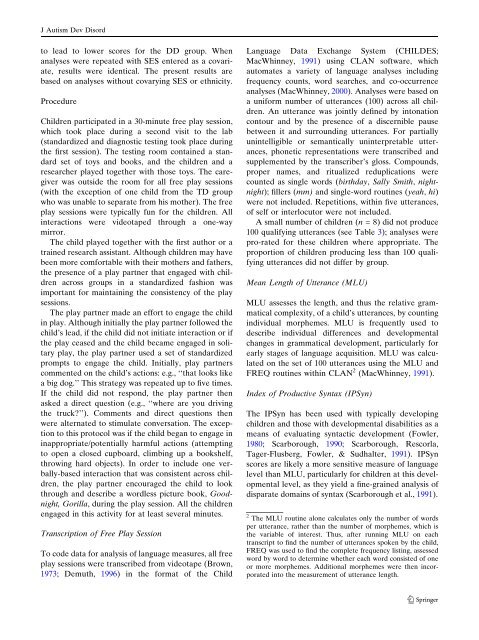
![PATROLOGIA GRECA E LATINA [Patrologiae cursus completus]. All ...](https://img.yumpu.com/50711133/1/184x260/patrologia-greca-e-latina-patrologiae-cursus-completus-all-.jpg?quality=85)
